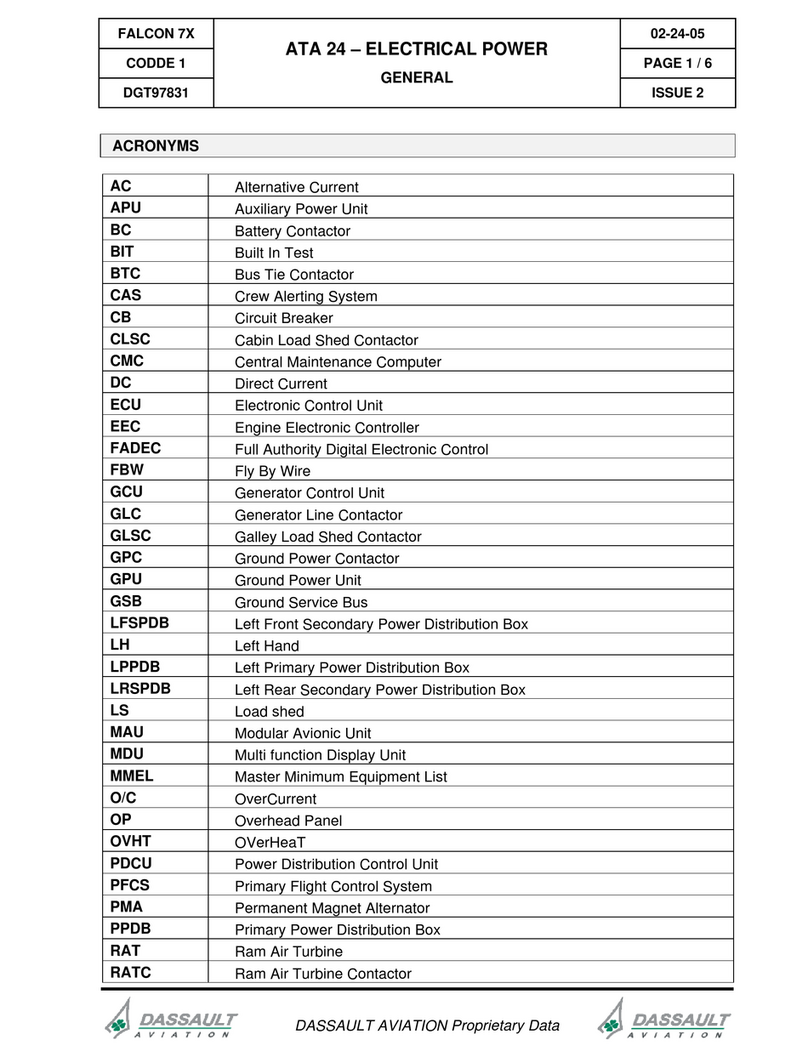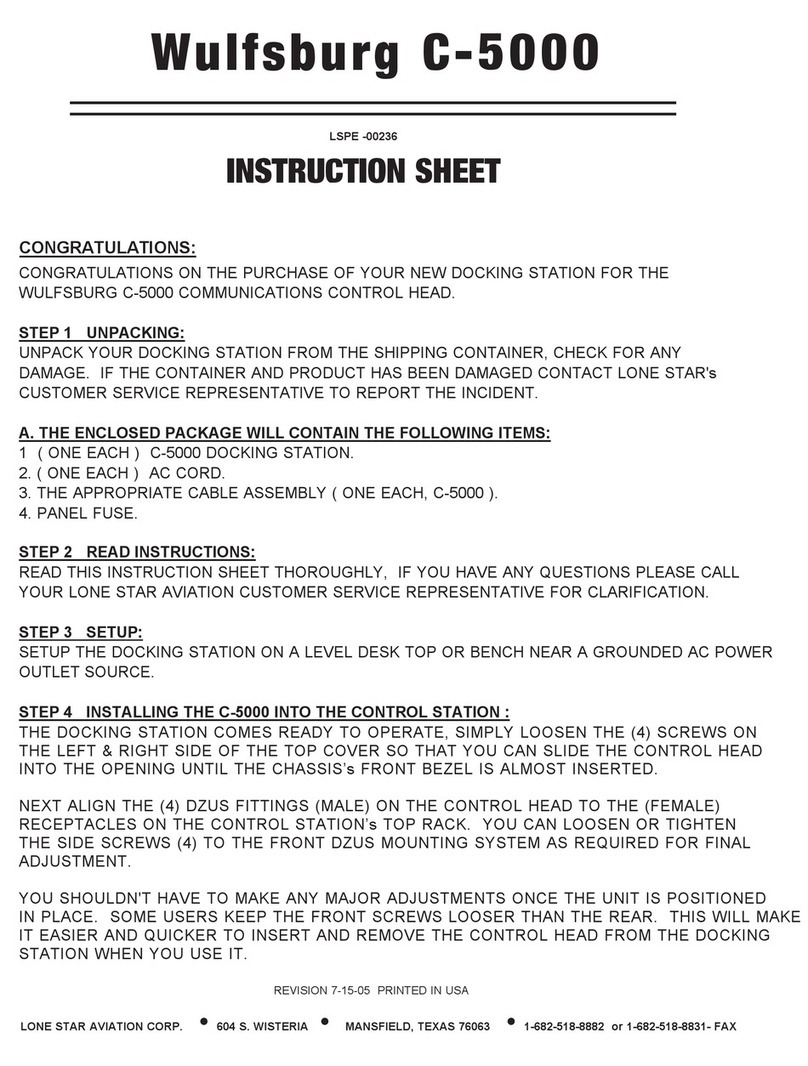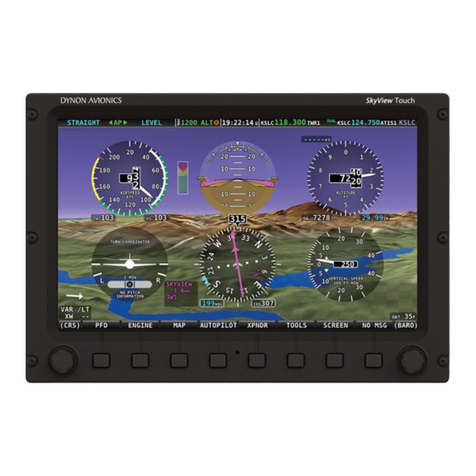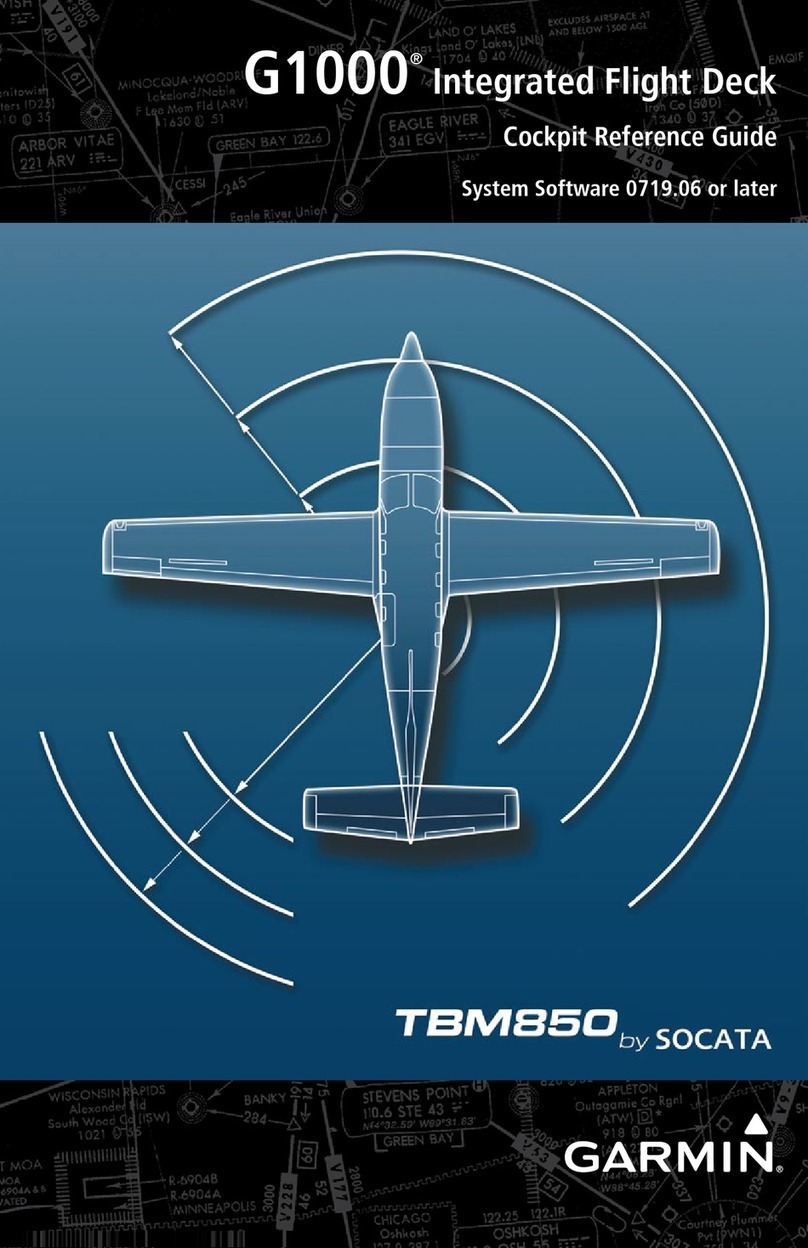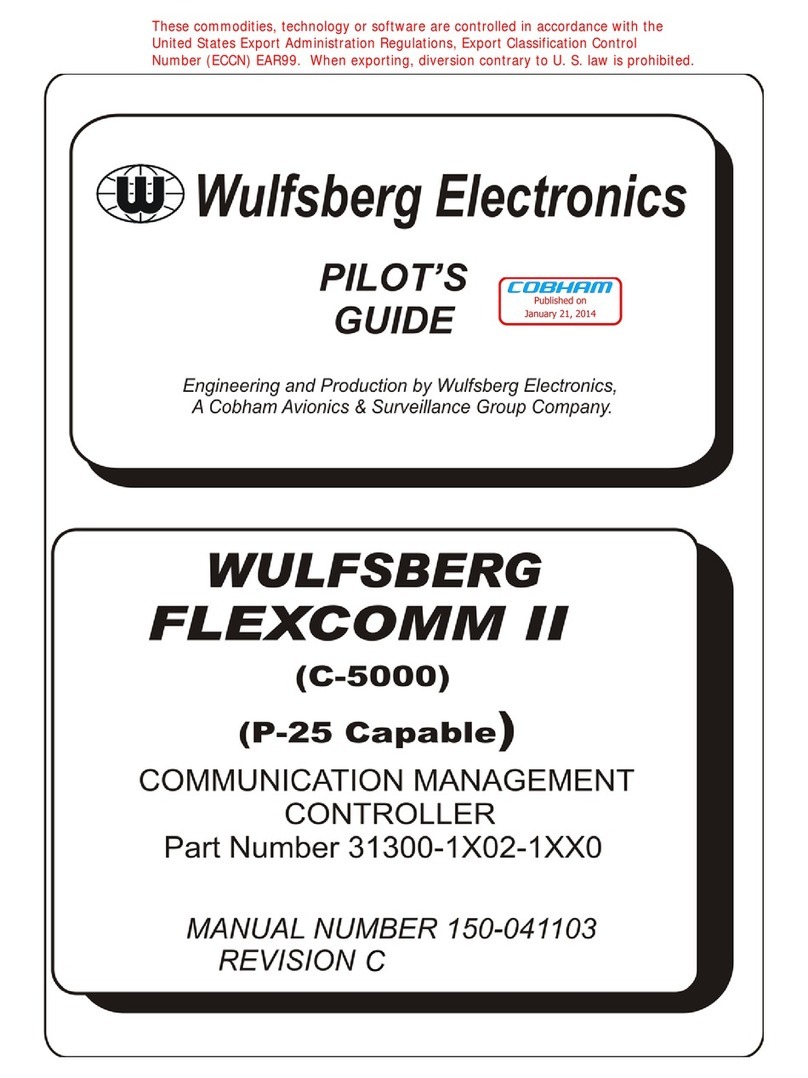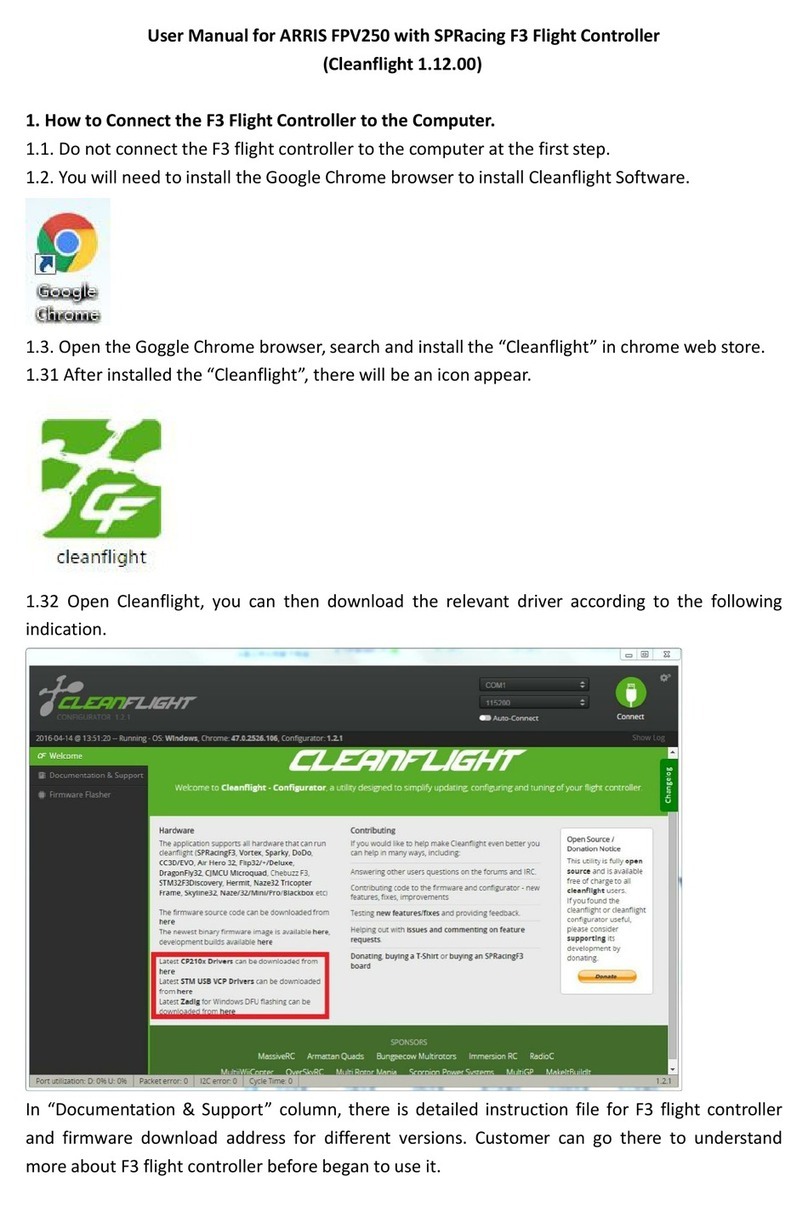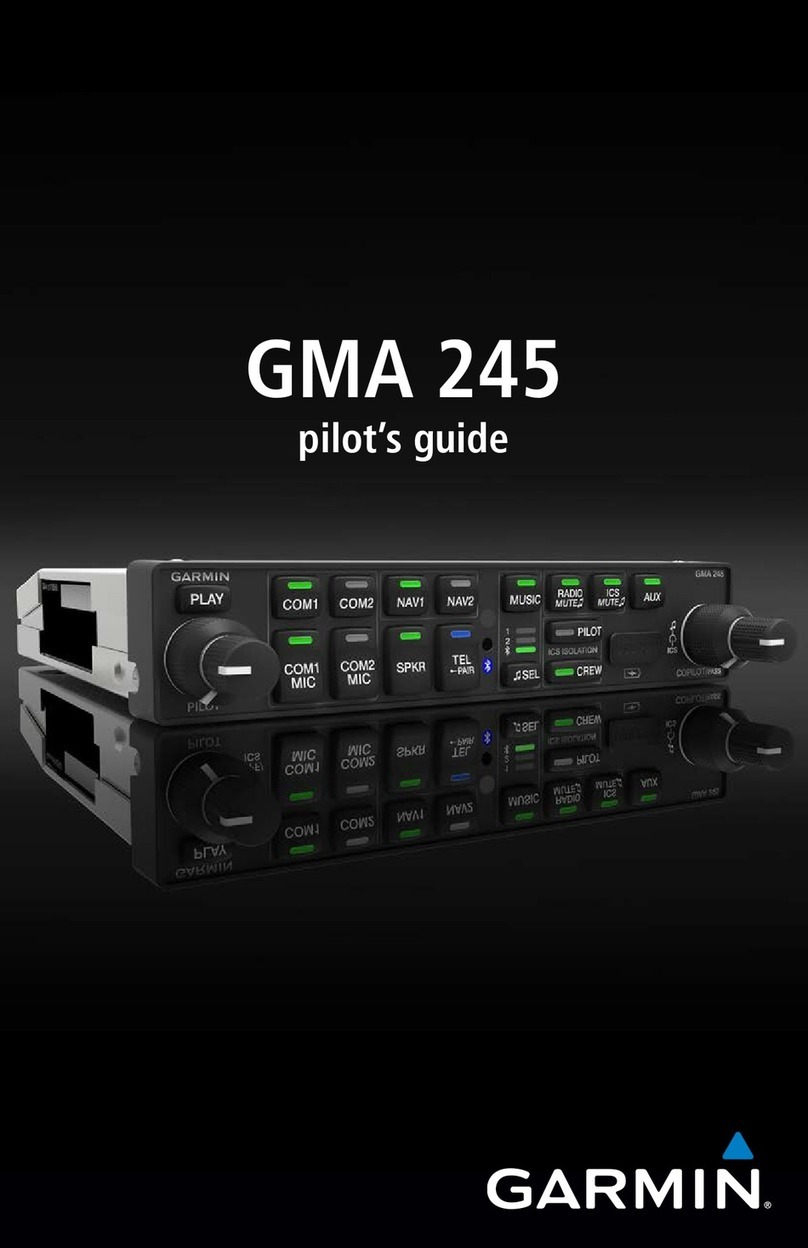DASSAULT AVIATION Falcon 2000EX EASy User manual

F2000EX EASY 02-22-00
CODDE 1 PAGE 1 / 2
DGT94085
ATA 22 – AUTO FLIGHT
TABLE OF CONTENTS
ISSUE 3
DASSAULT AVIATION Proprietary Data
02-22 ATA 22 – AUTO FLIGHT
02-22-00 TABLE OF CONTENTS
02-22-05 GENERAL
Introduction
02-22-10 DESCRIPTION
Automatic flight control system interface
Automatic flight control system operation
Automatic flight control system modes
Autopilot CAT II approach
02-22-15 SPEED PROTECTION MODE
Introduction
Definitions
General rules for speed protections
Speed protection modes with autopilot on
Speed protection modes with autopilot off
Speed protection modes without mode on the FMA
02-22-20 CAS MESSAGES

02-22-00 F2000EX EASY
PAGE 2 / 2 CODDE 1
ISSUE 3
ATA 22 – AUTO FLIGHT
TABLE OF CONTENTS
DGT94085
DASSAULT AVIATION Proprietary Data
INTENTIONALLY LEFT BLANK

F2000EX EASY 02-22-05
CODDE 1 PAGE 1 / 4
DGT94085
ATA 22 – AUTO FLIGHT
GENERAL
ISSUE 3
DASSAULT AVIATION Proprietary Data
INTRODUCTION
The Falcon 2000EX EASy Automatic Flight Control System (AFCS) is composed of:
- 2 Flight Director (FD) and 2 AutoPilot (AP) systems,
- 1 Thrust Director (TD) and 1 Auto-Throttle (AT) systems, 2 Yaw Damper (YD) and 2 Mach
Trim (MT) systems.
The AFCS elaborates orders in path and roll axis. These orders are displayed on the Attitude
Director Indicator (ADI), on the Head-up Guidance System (HGS, optional), and identified as
Flight Director (FD) orders.
The AFCS elaborates also a thrust order, displayed on the ADI, on the HGS (optional), and
identified as Thrust Director order.
When AP and AT are engaged, electric servo-motors are connected to:
- the flight controls via a clutch, so that the airplane will follow the FD orders,
- the power levers cables so that the engines will follow the TD orders.
Flight Director (FD) and AutoPilot (AP) can operate in:
- basic mode (ROLL and PATH),
- superior modes:
o Lateral NAVigation (LNAV),
o Heading / Track (HDG / TRK),
o APProach (APP),
o ALTitude (ALT),
o Altitude SELection (ASEL),
o CLimB (CLB),
o Vertical Speed (VS),
o Vertical NAVigation (VALT, VCLB, VPTH, VASEL, VGP),
o Glide Slope (GS).
Thrust Director (TD) and Auto-Throttle (AT) can operate in:
- speed / Mach mode,
- thrust mode.
The FD can also operate in the following specific modes:
- Go-Around (GA),
- windshear (not available).
The Automatic Flight Control System (AFCS) also automatically trims the airplane in pitch and
compensates for pitch variation during deployment of slats, flaps and airbrakes.
Whatever vertical modes selected, when AP is engaged, pitch is automatically limited to +/-
20°.

02-22-05 F2000EX EASY
PAGE 2 / 4 CODDE 1
ISSUE 3
ATA 22 – AUTO FLIGHT
GENERAL
DGT94085
DASSAULT AVIATION Proprietary Data
FIGURE 02-22-05-00 FLIGHT DECK OVERVIEW

F2000EX EASY 02-22-05
CODDE 1 PAGE 3 / 4
DGT94085
ATA 22 – AUTO FLIGHT
GENERAL
ISSUE 3
DASSAULT AVIATION Proprietary Data
FIGURE 02-22-05-01 THRUST DIRECTOR - FLIGHT DIRECTOR
When engaged, the AT generate the appropriate synchronized power settings on the two
engines, with respect of engine and airplane flight envelope limitations (max / min N1, VMO /
MMO) or specific speed references.
The TD is associated to the speed bug set through the GP in MAN mode or by the FMS in
FMS mode.
FD and TD can be selected to be displayed or not on ADI by pressing on the relevant FD/TD
pushbuttons on the Guidance Panel (GP). When they are selected, a green ON symbol is lit
on the pushbutton. When the FD and/or TD commands are invalid, a red flag is displayed on
both ADI and FD and TD are dropped from displays.
FIGURE 02-22-05-02 FMA AREA

02-22-05 F2000EX EASY
PAGE 4 / 4 CODDE 1
ISSUE 3
ATA 22 – AUTO FLIGHT
GENERAL
DGT94085
DASSAULT AVIATION Proprietary Data
AP and AT modes status (armed, engaged) and their references are displayed on the Flight
Mode Annunciator (FMA) on each ADI, according to the EASy color code. Only one vertical
AP mode and one lateral AP mode may be active at the same time. However, one vertical
armed and one lateral armed modes can be simultaneously selected, for example when APP
(approach mode) is armed, LOC and GS are armed.
Activation of the Touch Control Steering (TCS) function allows the crew to manually set a new
reference attitude and path without disengaging the AP. When the TCS pushbutton (on the
yoke) is depressed, the AP servomotors are disengaged allowing the pilot to fly the airplane.
Release of the TCS button will re-engage the AP servomotors. The FD will synchronize on the
new reference values or return to its previous target, depending on previous active modes.
When AP is not engaged, an automatic Mach trim increases manual longitudinal stability of
the airplane at high Mach numbers (above 0.77) by adjusting the horizontal stabilizer position
as Mach number is changing.
Mach trim is automatically engaged at airplane power up and cannot be manually
disengaged.
With the Mach trim system engaged, the normal trim can be used at any time to adjust the
stabilizer position. Once the normal pitch trim switch is released, the Mach trim system will
resume its operation.
When AP is engaged, an auto-trim is provided by the AFCS.
A Yaw Damper (YD) independent from the AP provides automatic stabilization in yaw during
manual handling of the airplane, and turn coordination during AP operation.
NOTE
FD and/or TD orders can also be flown manually (AP and/or AT disengaged, lateral and vertical
modes remain active).

F2000EX EASY 02-22-10
CODDE 1 PAGE 1 / 22
DGT94085
ATA 22 – AUTO FLIGHT
DESCRIPTION
ISSUE 3
DASSAULT AVIATION Proprietary Data
AUTOMATIC FLIGHT CONTROL SYSTEM INTERFACE
AFCS (Autopilot and Auto-Throttle) is managed:
- on the instrument panel,
o the Guidance Panel (A) gathering all AFCS mode controls and indications,
o the Flight Mode Annunciator (B) providing status of AFCS mode operation (B and C).
- on the yoke (D),
o the AutoPilot (AP) quick disconnect pad,
o the Take-Off Go Around (TOGA) pushbutton,
o the Touch Control Steering (TCS) pushbutton.
- on the throttles of engines No 1 and 2,
o the AT (E) quick disconnect pushbuttons.
FIGURE 02-22-10-00 AFCS CONTROLS

02-22-10 F2000EX EASY
PAGE 2 / 22 CODDE 1
ISSUE 3
ATA 22 – AUTO FLIGHT
DESCRIPTION
DGT94085
DASSAULT AVIATION Proprietary Data
FIGURE 02-22-10-01 GUIDANCE PANEL
The AFCS functions are hosted in the Modular Avionics Unit (MAU). The EASy installation
contains two AFCS. The standard dual configuration can provide both manual and automatic
reversion and interface capabilities sufficient to maintain full AFCS functionality, despite the
absence of the other AFCS (due to failure). The fail operational design of the AFCS provides
automatic reversion following in-flight failure of an MAU, except for the servo-motor failures:
after a servo-motor failure, there is a transfer in priority AFCS, but the engagement of the 2nd
AFCS is inhibited. The reversion is annunciated to the crew, but will result in no changes to
the mode selection or engage status except for servo-motor failures.
AUTOMATIC FLIGHT CONTROL SYSTEM OPERATION
PILOT FLYING (PF) SIDE SELECTION
FIGURE 02-22-10-02 AP / YD / PF AREA
PILOT SIDE (PF) pushbutton (on the GP). The selected side is indicated by a green light on
the left or right side of the pushbutton (LH by default), and by an horizontal arrow in the
middle of each Flight Mode Annunciator (FMA) of each ADI.
NOTE
At power on, LH side is selected by default.

F2000EX EASY 02-22-10
CODDE 1 PAGE 3 / 22
DGT94085
ATA 22 – AUTO FLIGHT
DESCRIPTION
ISSUE 3
DASSAULT AVIATION Proprietary Data
The following sensors and equipment selected on the PF side are used by the AFCS for
computations:
- Air Data System (ADS),
- Inertial Reference System (IRS),
- Flight Management System (FMS).
During the PILOT SIDE selection change, AP/FD modes are automatically de-selected and
they must be selected again.
NOTE
We can observe that after a PILOT SIDE change, non-engaging of LNAV,VNAV modes.
In this case, it is recommended to respect a waiting period (about 30 sec) before a new
selection of these modes.
AP ENGAGEMENT
FIGURE 02-22-10-03 AP PUSHBUTTON
Engagement of the AP is achieved through depression of the AP pushbutton on the GP.
When engaged, ON is illuminated in green on the AP pushbutton and a green AP symbol is
displayed at the top center of each FMA.
When AP is engaged, the horizontal and vertical modes are displayed in reverse video on
the FMA. With this symbology, pilots are immediately warned about the status of the
AutoPilot.

02-22-10 F2000EX EASY
PAGE 4 / 22 CODDE 1
ISSUE 3
ATA 22 – AUTO FLIGHT
DESCRIPTION
DGT94085
DASSAULT AVIATION Proprietary Data
AP DISENGAGEMENT
Normal AP disconnect
-Quick disconnect pad on the yoke (one push),
-AP pushbutton on the GP,
-Go-Around pushbutton (one push).
FIGURE 02-22-10-04 AUTOPILOT DISENGAGEMENT (RH)
AP disconnect
-Normal or emergency stabilizer trim command,
-Overriding action on the yoke (force disconnection),
-AP 1 and 2 failure,
-Stall warning.
NOTE
When triggered, continuous aural AutoPilot warning and AP red symbol flashing on the FMA
remains active as long as there is no push on the quick disconnect pad.
TCS pushbutton (push and maintain): when the TCS pushbutton (on the yoke) is
depressed, the AP servomotors are disengaged but the AP is not properly speaking
disconnected.
YD ENGAGEMENT / DISENGAGEMENT
The Yaw Damper is automatically engaged on the ground after successful completion of the
AFCS power up test or in-flight upon AP engagement, or by pressing the YD pushbutton
(the ON caption on the pushbutton illuminates in green).
YD disengagement will disengage AP, but AP disengagement will not disengage the YD.
YD failure will not disengage the AP.

F2000EX EASY 02-22-10
CODDE 1 PAGE 5 / 22
DGT94085
ATA 22 – AUTO FLIGHT
DESCRIPTION
ISSUE 3
DASSAULT AVIATION Proprietary Data
AUTO-THROTTLE ENGAGEMENT / DISENGAGEMENT
FIGURE 02-22-10-05 AT PUSHBUTTON
Engagement / disengagement of the AT is achieved through depression of the AT
pushbutton on the GP, only when the airplane is flying above 400 ft Radio Altimeter. When
AT is engaged, the ON symbol on the AT pushbutton illuminates in green and a green A/T
symbol displayed at the top left corner of each FMA. When AT is engaged, the AT modes
are displayed in reverse video on the FMA.
AT can also be disengaged by:
- overriding the throttles (force disconnection),
- pressing the AT quick disconnect on engine #1 and/or #2 throttles,
- FADEC malfunction,
- pushing AT pushbutton on GP.
Whenever the AT is normally disconnected, the A/T symbol on the FMA will turn amber and
flash for 10 seconds. Upon abnormal disengagement (manual override, failure, or FADEC
malfunction) an "AUTO-THROTTLE" aural warning is triggered and the amber A/T symbol
flashes. The warnings stop when one of the AT Quick disconnect buttons is pressed.
NOTE
AP and AT must be disengaged at minimum used height.

02-22-10 F2000EX EASY
PAGE 6 / 22 CODDE 1
ISSUE 3
ATA 22 – AUTO FLIGHT
DESCRIPTION
DGT94085
DASSAULT AVIATION Proprietary Data
AUTOMATIC FLIGHT CONTROL SYSTEM MODES
LATERAL MODES
FIGURE 02-22-10-06 LATERAL MODES CONTROLS
The AFCS lateral modes are:
- Basic Roll mode (ROL),
- Heading or Track modes (HDG / TRK),
- Lateral Navigation mode (LNAV),
- APProach mode (APP).
Basic Roll mode
When AP is engaged and no FD modes are selected, the AP holds the airplane current
roll attitude. Depending on the roll condition upon AP engagement:
-roll hold when the airplane roll attitude exceeds 6°, up to 28° max above 20,000 ft,
35° max below 20,000 ft,
-roll return to 0° when the roll attitude is between 6° and 3°,
-heading hold when the roll attitude has remained lower than 3° for 10 seconds.
Roll angle can be modified through TCS function: up to 28° (above 20,000 ft) or 35° max
below 20,000 ft.

F2000EX EASY 02-22-10
CODDE 1 PAGE 7 / 22
DGT94085
ATA 22 – AUTO FLIGHT
DESCRIPTION
ISSUE 3
DASSAULT AVIATION Proprietary Data
Heading / Track modes
Heading (HDG) or Track (TRK) mode is selected with the outer rotary switch (outer ring)
on the GP, then engaged by pressing the HDG / TRK pushbutton, which displays a green
ON symbol. Heading or Track value is set with the inner rotary knob (inner ring) and
displayed (in degrees) on the digital readout just above the knob, on the FMA and on the
HSI.
FIGURE 02-22-10-07 HEADING OR TRACK MODE
When engaged, the AP captures and hold the heading or track corresponding to the bug
position. Turn will be initiated in the direction the heading bug was turned to (even for
changes of more than 180° but less than 360°), at High or Low bank angle, as manually
selected on the AVIONICS window (AFCS Tab) or as automatically selected according to
current airplane altitude (High bank 28° below 30,000 ft (+/- 500 hysteresis), Low bank
14° above). Low bank symbol is displayed on the roll scale at the top of the ADI.
Pressing the PUSH SYNC rotary knob synchronizes selected heading or track value to
the current heading or track of the airplane.
NOTE
TRK mode is not available when pilot flying IRS parameters are not valid.
When activated, HDG or TRK mode can be disengaged automatically by AFCS logic (e.g. if
LOC mode is armed, there is an automatic transition from HDG / TRK mode to LOC mode) or
manually by pressing again on the HDG / TRK pushbutton (return to ROLL mode).

02-22-10 F2000EX EASY
PAGE 8 / 22 CODDE 1
ISSUE 3
ATA 22 – AUTO FLIGHT
DESCRIPTION
DGT94085
DASSAULT AVIATION Proprietary Data
Lateral navigation mode
Lateral navigation mode (LNAV) is selected by pressing the LNAV pushbutton, which
displays a cyan dot (LNAV armed) or a green dot (LNAV engaged), and accordingly the
FMA displays a cyan/green L NAV symbol. When LNAV is active, the FD will provide
lateral command to capture and hold the active leg of the flight plan. When engaged, the
AP will follow this FD lateral command and the roll will be automatically limited to 28°.
LNAV can be automatically activated after a DIRECT TO a waypoint selection and after a
transition from ROLL / HDG / TRK to LNAV (for these last cases, the airplane trajectory
must be convergent to the considered flight plan leg).
When active, LNAV mode can be disengaged automatically by AFCS logic (e.g.
commutation from LNAV to LOC if APP was previously armed) or manually by pressing
the LNAV pushbutton or by selection of HDG or TRK mode.
FIGURE 02-22-10-08 LNAV AND ALT MODES
Approach mode
Approach mode (APP) is selected by pressing the APP pushbutton on the GP. A cyan
light (APP armed) or a green light (APP engaged) is then displayed on the pushbutton
itself. Accordingly the FMA displays LOC and G/S cyan / green indications for a precision
approach (ILS) or a LNAV and VGP indication for a non-precision approach.
FIGURE 02-22-10-09 LOC AND GLIDE ARMED
FIGURE 02-22-10-10 LOC CAPTURED AND GLIDE ARMED

F2000EX EASY 02-22-10
CODDE 1 PAGE 9 / 22
DGT94085
ATA 22 – AUTO FLIGHT
DESCRIPTION
ISSUE 3
DASSAULT AVIATION Proprietary Data
FIGURE 02-22-10-11 LOC AND GLIDE CAPTURED
When engaged, the APP mode allows the airplane to capture and follow a LOC beam.
This mode is similar to the LNAV mode but provides more accurate track monitoring. The
LOC can also be captured from ROL, HDG / TRK, LNAV lateral modes. When active,
APP mode can be disengaged automatically by AFCS logic (e.g. loss of sensors) or
manually by pressing the APP pushbutton.
FIGURE 02-22-10-12 APP LOC AND GLIDE CAPTURED-DUAL COUPLED
If Back Course has been selected on the Flight Management system window for the
arrival phase of flight, the AP mode selection engages the B/C lateral mode. In B/C
mode, the final descent to the runway can be performed in PATH or VS modes.
NOTE
When Back Course has been selected, it remains active until de-selection in FMW window
(ARRIVAL phase, STAR App tab).

02-22-10 F2000EX EASY
PAGE 10 / 22 CODDE 1
ISSUE 3
ATA 22 – AUTO FLIGHT
DESCRIPTION
DGT94085
DASSAULT AVIATION Proprietary Data
VERTICAL MODES
FIGURE 02-22-10-13 VERTICAL MODES CONTROLS
The AFCS vertical modes are:
- Basic Path mode (PATH),
- Altitude mode (ALT),
- Preset Altitude mode (ASEL),
- Climb mode (CLB),
- Vertical Speed mode (VS),
- Vertical Navigation mode (VALT, VCLB, VPTH, VASEL, VGP),
- Glide Slope mode (GS).
Basic Path mode
If no FD modes are displayed on the FMA, engaging the AutoPilot automatically selects
basic modes (ROLL and PATH). The PATH limits when AP is engaged are
+/- 17°. AP engagement outside of these limits will bring back the airplane to a
commanded path at +/- 17°. Within these limits, the path angle can be changed through
use of the PATH / VS thumb wheel, up and down (UP/DN), and also through TCS
function.
FIGURE 02-22-10-14 PATH MODE

F2000EX EASY 02-22-10
CODDE 1 PAGE 11 / 22
DGT94085
ATA 22 – AUTO FLIGHT
DESCRIPTION
ISSUE 3
DASSAULT AVIATION Proprietary Data
Altitude mode
Altitude mode (ALT) is selected manually by pressing the ALT pushbutton on the GP and
a green ON light is displayed, or automatically after capture of a Pre-selected Altitude
(ASEL). The AP if engaged will capture and hold the altitude. The FMA displays the
green ALT indication and the reference altitude along with the corresponding bug on the
altitude tape. Airplane response in ALT mode is limited to +/- 0.1 g or +/- 20° pitch angle.
FIGURE 02-22-10-15 ALT MODE
When active, ALT mode can be disengaged automatically by AFCS logic (e.g. Glide
Slope capture) or manually by pressing the ALT pushbutton.
Preset Altitude mode
Preset Altitude mode (ASEL) is automatically armed as soon as:
-a pre-selected altitude has been set, either manually (ASEL) or automatically
through the FMS (VASEL) using a VNAV mode,
-the airplane is climbing / descending towards the pre-selected altitude.
The reference pre-selected altitude value (or FL value when BARO setting is STD) is
displayed on the readout above the ASEL setting knob (1,000 feet or 100 feet
increments). This reference value and associated bug are also displayed on the FMA, on
top of the altitude tape. Depending on the selection made on the HSI menu, the ASEL
unit can be either ft or m.
When the AP has been engaged in normal conditions (except with active VGP or G/S
modes: in these cases, ASEL is ignored), it will capture and hold the reference with a
minimization overshoot:
-during climb, the capture phase is initiated when the pre-selected altitude is within
2,000 ft (0.8 g max) of current airplane altitude,
-during descent, the capture phase is initiated when the pre-selected altitude is within
10,000 ft (1.2 g max) of current airplane altitude.
If the current flight path is diverging from the ASEL reference or if the selected mode is
incompatible with ASEL logic, a CHECK ASEL message will be displayed on the FMA.

02-22-10 F2000EX EASY
PAGE 12 / 22 CODDE 1
ISSUE 3
ATA 22 – AUTO FLIGHT
DESCRIPTION
DGT94085
DASSAULT AVIATION Proprietary Data
Climb mode
Climb mode (CLB) is selected by pressing the CLB pushbutton on the GP, and a green
ON light is displayed on the pushbutton itself. When engaged, the AP will set and adjust a
climb path in order to follow the reference climb speed/Mach profile set manually by the
crew (SPEED knob) or automatically through the FMS (not available in initial
certification). The FMA displays the green CLB indication and speed bug (FMS or
manual) along the speed tape.
FIGURE 02-22-10-16 CLB MODE
When the speed reference has been manually set and the TCS is pressed, the speed /
Mach reference is synchronized to the current value when TCS is released.
Vertical Speed mode
Vertical Speed (VS) mode is selected by pressing the VS pushbutton on the GP and a
green ON light is displayed on the pushbutton itself. The FMA displays the VS indication
in green and the value of the vertical speed target in magenta. When VS is selected, all
other vertical AFCS modes can be armed, and a capture phase initiated by any of the
vertical modes de-selects the VS mode.
FIGURE 02-22-10-17 VS MODE

F2000EX EASY 02-22-10
CODDE 1 PAGE 13 / 22
DGT94085
ATA 22 – AUTO FLIGHT
DESCRIPTION
ISSUE 3
DASSAULT AVIATION Proprietary Data
When engaged, the AP will follow the vertical speed target. The reference vertical speed
is displayed on top of the vertical speed indicator on the right side of the altitude tape.
This reference vertical speed can be adjusted through the use of the VS/PATH wheel on
the GP. Each click on the wheel will change the vertical speed by +/- 100 ft/min. VS
reference can also be modified by pressing the TCS pushbutton, and synchronized to the
current vertical speed when TCS is released.
The maximum vertical speed commands are - 8,000 ft/min and + 6,000 ft/min.
Vertical Navigation mode
Vertical Navigation mode (VNAV) is selected by pressing the VNAV pushbutton on the
GP, and a cyan light (VNAV armed) or a green light (VNAV engaged) will be displayed.
The FMA will accordingly display the corresponding cyan/green mode/sub mode
indications. The FMS (necessarily selected as a source) will then send target values to
the AP to be used. FD modes for VNAV are VALT, VCLB, VPTH, VASEL, VGP:
-VALT: Transition to VALT automatically occurs upon VNAV mode capture of the
FMS pre-selected altitude or computed altitude (whichever is closer), or if the FMS
requests a direct transition to altitude hold. The reference altitude may also be
manually selected and in such case will have priority over the FMS computed
altitude.
-VCLB : when CLimB mode is operating, VCLB is selected by pressing the VNAV
pushbutton on the GP . It operates like the CLB mode except that guidance
commands are referenced to the FMS altitude and IAS/Mach values. Manually
selected speed reference can also be used in this mode. If a pre-selected altitude
has been manually set, this selection will override the FMS computed altitude if this
selected altitude value is below the FMS constraint.
-VPTH : it is selected by pressing the VNAV pushbutton on the GP. VPTH is only
active during descent and operate like VS mode. It is automatically engaged at the
TOD (Top Of Descent) if the ASEL is lower than the current altitude of the airplane.
To obtain a VPTH mode on a waypoint, it is necessary to have an altitude constraint
attached to this waypoint. If the ASEL is lower than the airplane current altitude, it is
possible to engage VPTH by performing a vertical DIRECT TO this waypoint.
-VASEL: this mode is armed as the ASEL mode is when the altitude constraint
attached to the waypoint is closer to the airplane current altitude than the ASEL.
VASEL mode operation status is displayed in the FMA only during capture phases. It
operates like PRESEL altitude mode.
Vertical mode
commanded
Vertical mode
commanded
FIGURE 02-22-10-18 VPTH MODE

02-22-10 F2000EX EASY
PAGE 14 / 22 CODDE 1
ISSUE 3
ATA 22 – AUTO FLIGHT
DESCRIPTION
DGT94085
DASSAULT AVIATION Proprietary Data
Glide Slope mode
Transition to Glide Slope mode (GS) from a VNAV mode occurs when the airplane gets
within the GS deviation limits with LOC captured. In the FMA the GS caption turns green.
Vertical Glide Path (VGP)
Not available.
ROTATION SYMBOL
The ROtation Symbol (ROS) is activated at power on by default.
In the vertical axis, the FD holds a fixed pitch (11°). A ROS (ROtation Symbol) displayed in
the ADI and the HUD helps the pilot to set the right pitch after rotation.
Rotation symbol is removed 3 seconds after lift off.
NOTE
Do not use the TOGA pushbutton at take-off (temporary limitation).
FIGURE 02-22-10-19 ROTATION SYMBOL
Table of contents
Other DASSAULT AVIATION Avionic Display manuals
Popular Avionic Display manuals by other brands
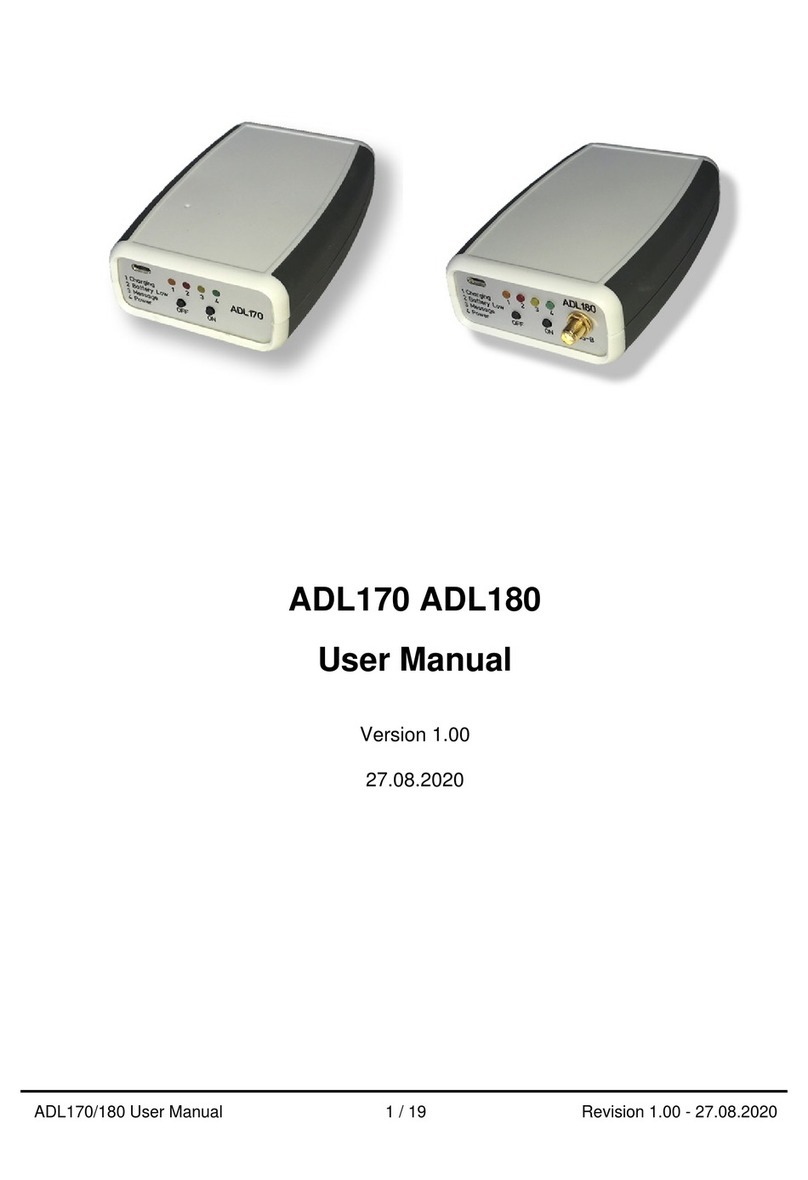
Golze Engineering
Golze Engineering ADL170 user manual
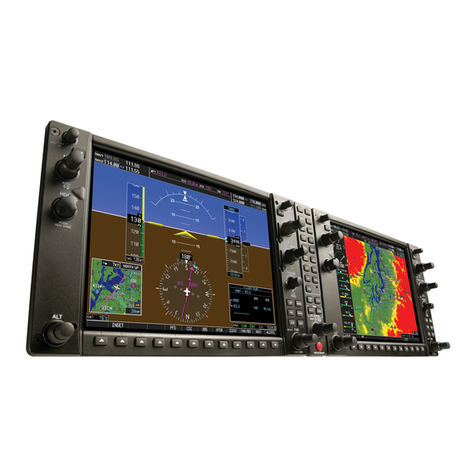
Garmin
Garmin Cessna Caravan G1000 pilot's guide
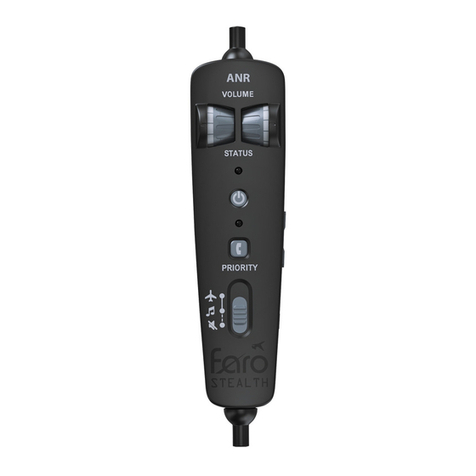
Faro
Faro Stealth Audio Link user guide

L3 Communications
L3 Communications SKYWATCH HP SKY899 Series installation manual

J.P. Instruments
J.P. Instruments EDM-350 Approved Installation Manual
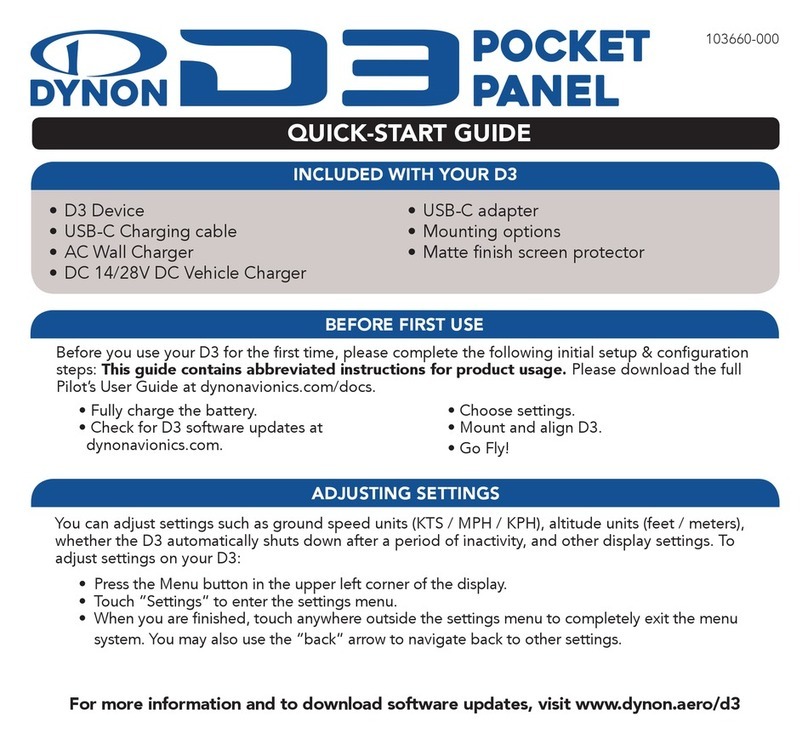
Dynon
Dynon D3 quick start guide

EPIC OPTIX
EPIC OPTIX Epic Eagle quick start guide
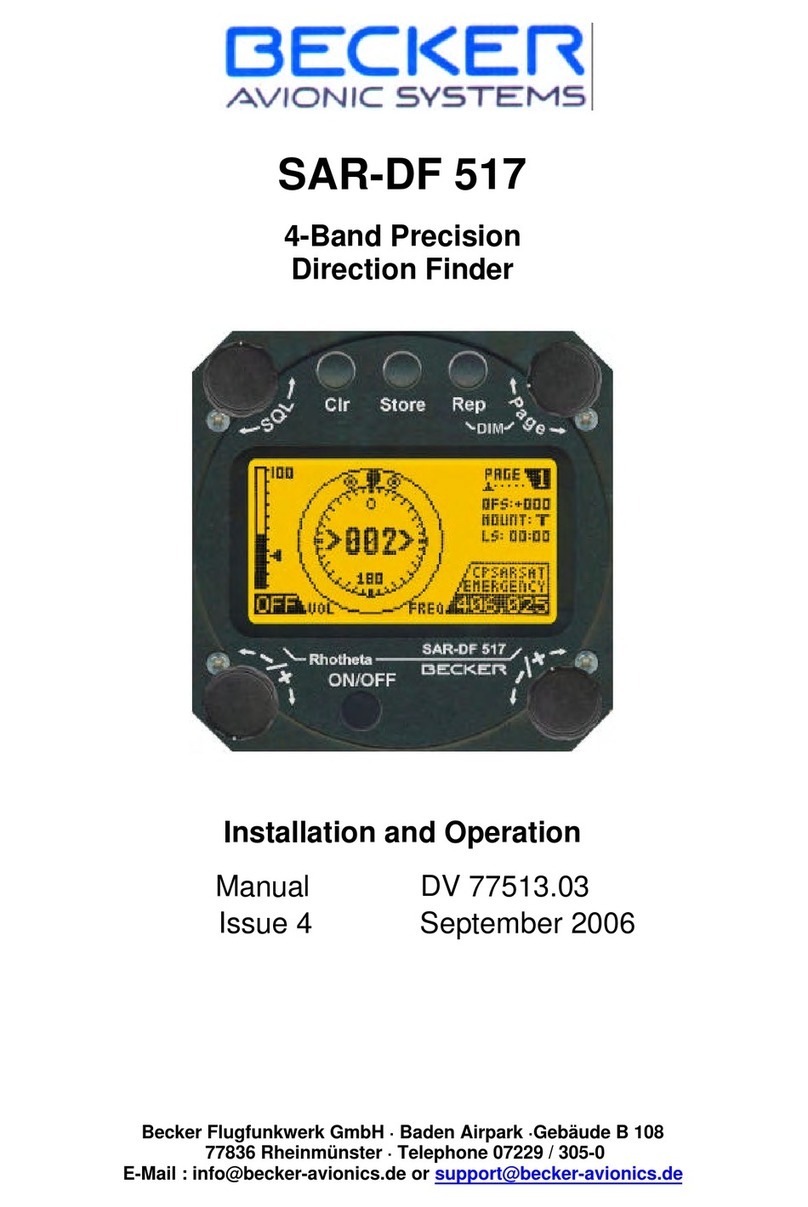
Becker
Becker SAR-DF 517 Installation & operation manual

Sismo
Sismo 737NG user manual
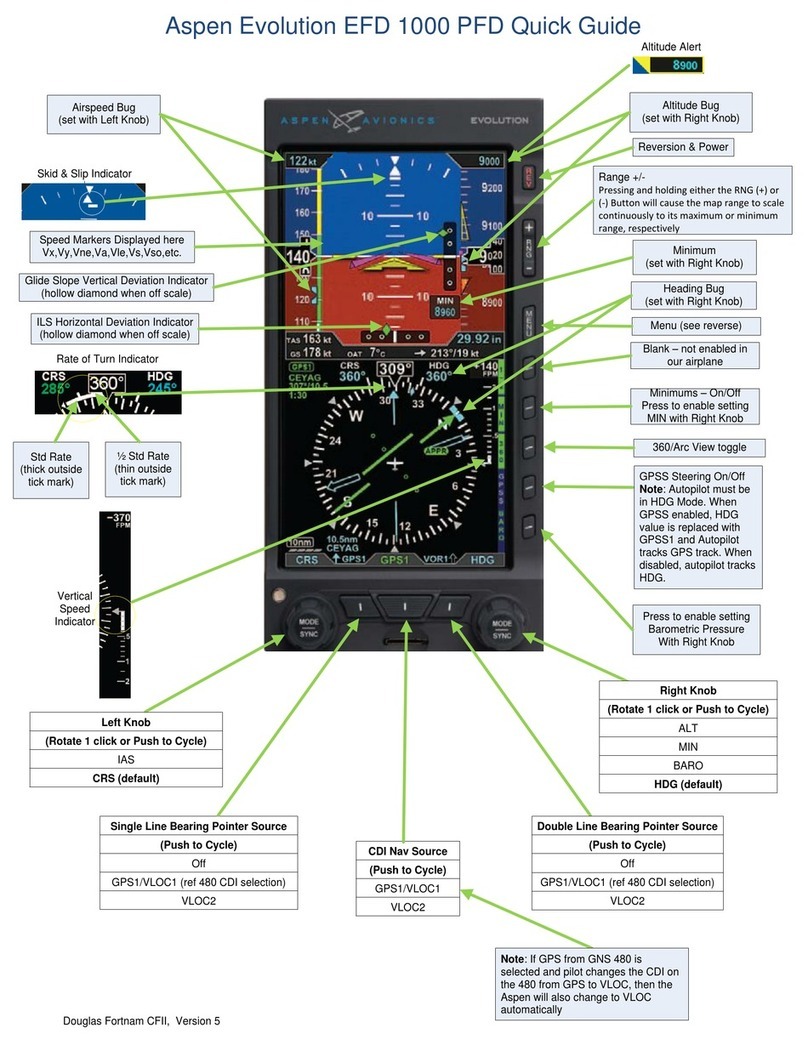
Aspen
Aspen Evolution EFD 1000 FDF quick guide
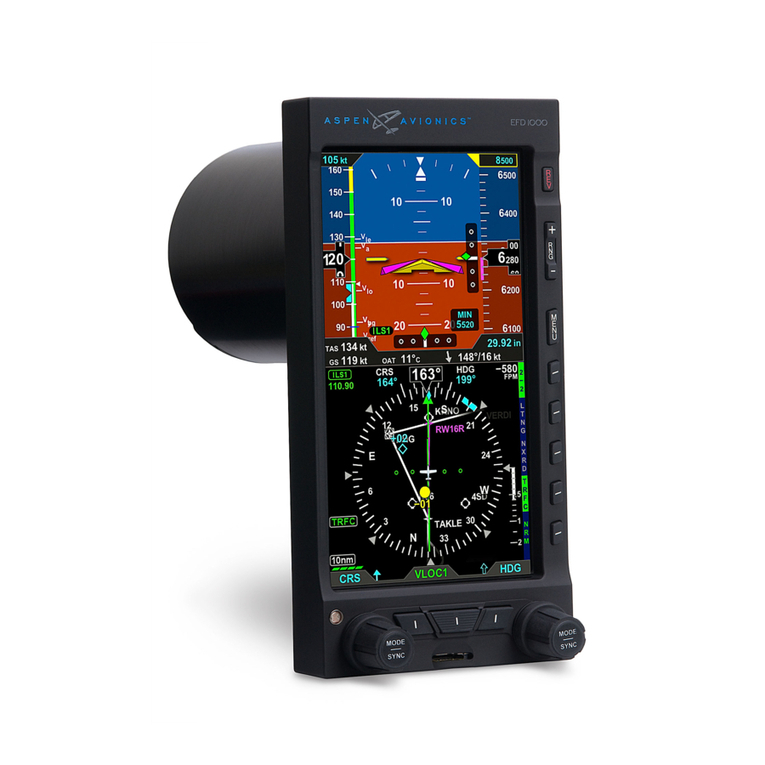
Aspen Avionics
Aspen Avionics Evolution 1000 Pro/VFR PFD pilot's guide
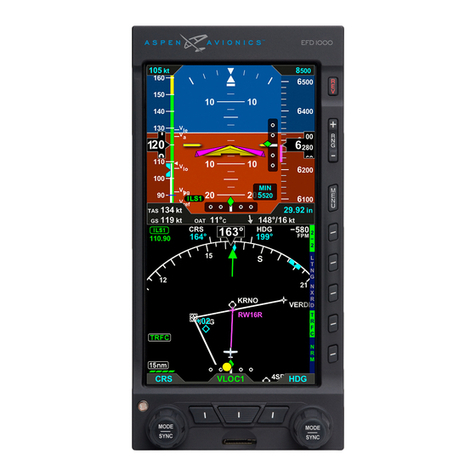
Aspen Avionics
Aspen Avionics Evolution EFD1000 PFD AIRPLANE FLIGHT MANUAL SUPPLEMENT
